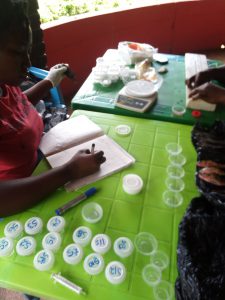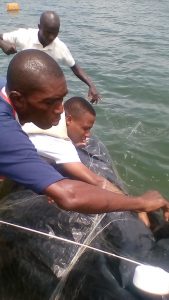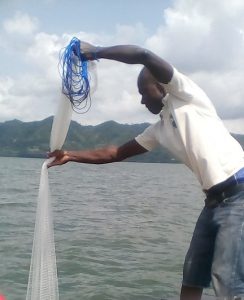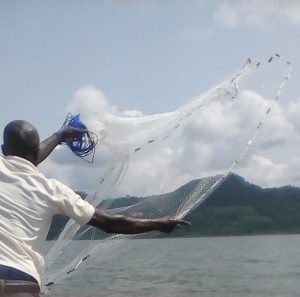Lead: Francis Nunoo (UG, Ghana) Email: fkenunoo@ug.edu.gh
Co-lead: Torben Lauridsen (AU, Denmark) Email: tll@bios.au.dk
Amos Asase (PhD Student) Email: amos.asase@uenr.edu.gh
Edna Quansah (PhD Student) Email: ednaquans@gmail.com
The tasks involved in this WP include an assessment of fish productivity from a historical review and new measurements of fish species composition, distribution, abundance, trophic relationships and limiting environmental variables, fish growth, demographic factors and fisheries management. An analysis of reproduction in the fish community will be used to assess fish population dynamics. Taxonomic identifications and information on diversity will be combined with length-weight analysis to determine fish growth. To promote fisheries management, we will investigate relationships among fishermen population, boat diversity and gears used in fishing. Scientific information will be integrated with traditional knowledge to help optimize lake management in a sustainable way to achieve profitability and efficiency in fisheries management. The yield (kg) and effort (in time and numbers of boats/gears) will be used to calculate the Catch Per Unit Effort (CPUE) which is an indicator of fish abundance in the lake. A review of available historical data on quantities of fish catch will be used to establish a baseline for determining exploitation rates and fluctuations in patterns of fish catch. We will assess the relationship among fish landings, fishing practices, fishing pressure and fishing gear and investigate efficiency of traditional fishing methods and socioeconomic problems associated with local fisheries.
Main Deliverables
- Assess fish stock and fish production dynamics
- Develop empirical model of lake function and fish production
- Design management strategies for sustainable fisheries management
Task 3.1: Determination of fish community structure, population dynamics and trophic relations.
Task 3.2: Measurement of fish growth rates in relation to environmental variables.
Task 3.3: Development of empirical model(s) describing fish production as a function of stratification, nutrient and primary production dynamics. Predictions of fish productivity under future climatic scenarios (by linking empirical model from task 3.3 to the output from the lake model developed in WP2).
Task 3.4: Assess the linkages between fish landings, fishing practices, fishing pressure and fishing gear.
Task 3.5: Investigate exploitation rates and impacts on commercial fisheries.
Task 3.6: Obtain knowledge of local skills, needs and socioeconomic problems affecting local fisheries.
Task 3.7: Develop policy brief(s) outlining various management response options to changing lake conditions and existing fishing practices.











